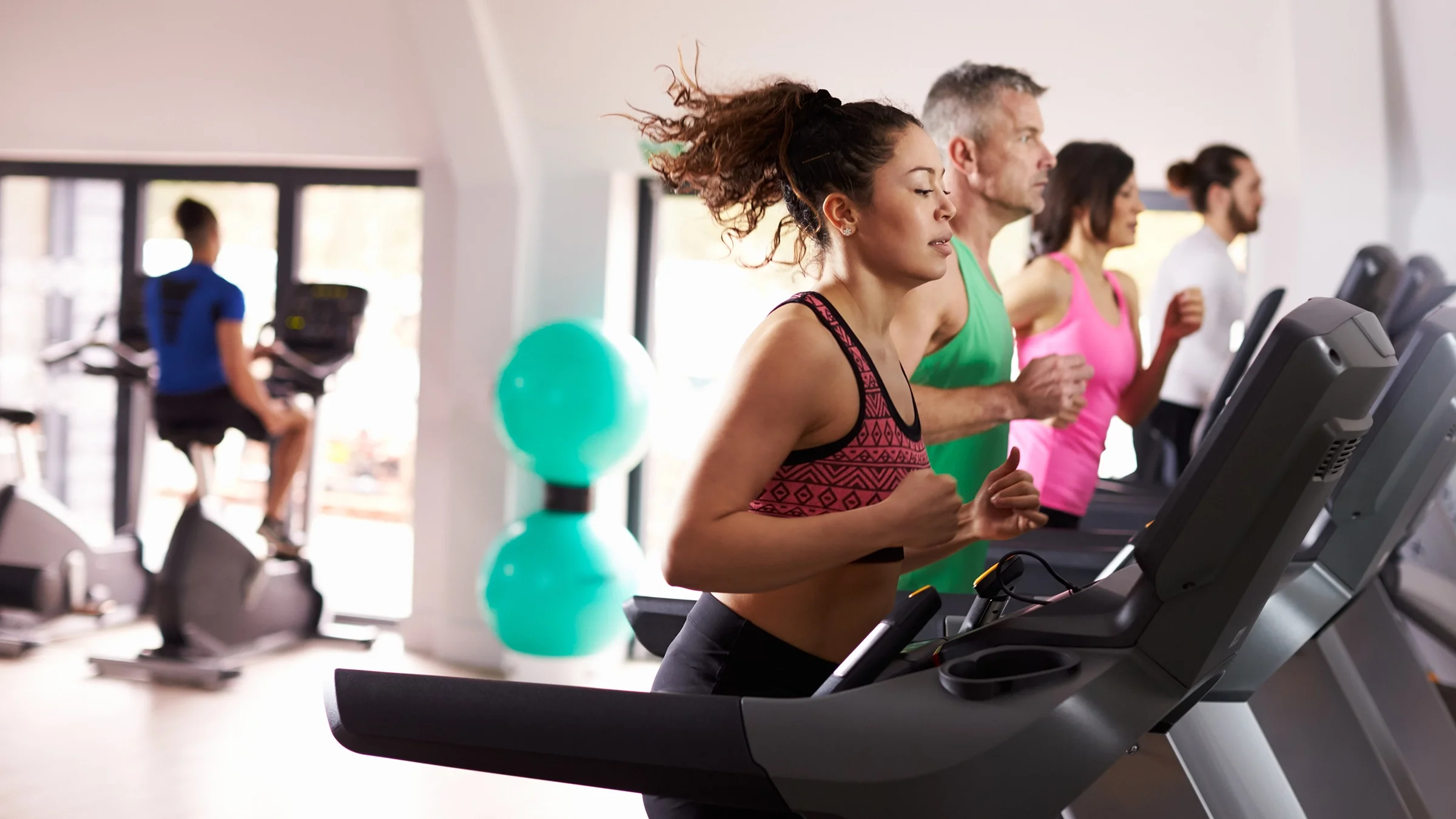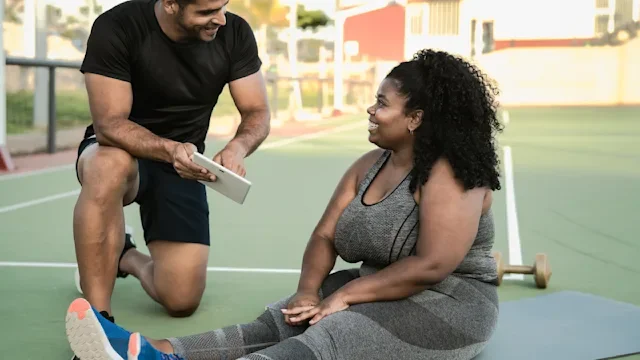Key takeaways:
Biking and running provide effective workouts to improve your cardiovascular health.
Running may burn more calories and build bone strength, while biking is easier on joints and improves balance and coordination.
Doing a mix of both activities is ideal for improving fitness and reaching your goals.
You can add both activities to your routine for better health and fitness.
If you're going to spend precious time exercising, you should get the most bang for your buck. Biking and running are two of the best aerobic activities to boost cardiovascular fitness.
But, is one better than the other? That depends mainly on your goals. Ultimately, the most important factor is which activity you enjoy and are likely to do regularly.
Which is better: biking or running?
You can get an effective cardio workout whether you choose to bike or run. Both have been shown to:
Increase aerobic capacity and fitness
Improve heart health and longevity
Help relieve stress and improve mental health
Search and compare options
But one activity might have a slight edge, depending on your fitness goals.
Losing weight
If weight loss is your goal, you want to choose a calorie-burning activity that moves your body and works your muscles. Both biking and running fit the bill. But running may help you burn more calories in less time. In a small 2019 study, researchers compared energy expenditure during different activities. They found that treadmill running burned more calories than riding a stationary bike.
Calorie burn depends on many factors, including exercise intensity and workout duration. The harder or longer you exercise, the more calories you'll burn. That could give biking the edge over running for losing weight and increasing endurance. Biking is low impact, so you might be able to do it faster or longer than you can run.
If you have time for a long workout, biking is the way to go. You can burn calories and maintain roughly the same pace for 90 minutes. But it's much more challenging to do that while running if you're not used to running that long. And biking for 90 minutes burns more calories than running for 30 minutes at a similar intensity.
Running is the better choice if you're short on time. But remember, exercise is one of many factors — like a balanced diet and restful sleep — that support healthy weight loss.
Building muscle
Running and cycling primarily work lower-body muscles, including the:
Hip flexors
Glutes
Hamstrings
Quadriceps
Calves
Read more like this
Explore these related articles, suggested for readers like you.
So, running and cycling can help you build lower-body muscles. You also engage your core — including the abdominals and lower back muscles — during both activities. These muscles help stabilize your body during everyday activities and exercise.
Running is a full-body exercise that includes upper-body movement. It may activate your leg muscles differently than biking. But that doesn't mean one is better than the other.
Like burning calories, building muscle depends on exercise intensity. Doing either activity on an incline increases the intensity, which may activate more muscles than working on a flat surface. With uneven or hilly surfaces, your legs work harder against resistance.
You can take a biking or running workout to the next level with high-intensity interval training (HIIT). HIIT involves brief periods of intense exercise followed by lower-intensity recovery periods. It may be more effective for strengthening muscles than continuous running or biking.
While aerobic activities can help, strength training is the key to building muscle mass and strength. So, be sure to include resistance workouts in your fitness plan.
What are the benefits of biking?
Biking is an enjoyable way to boost cardiovascular fitness. That's true whether you're in the gym on a stationary bike or outdoors on roads or trails. It has many benefits that make it a great option either in place of or in addition to running.
Biking provides low-impact exercise
Biking is a low-impact exercise, unlike running, where your feet hit the ground. Low-impact exercise puts less strain on the muscles and joints. So, it's easier for your body to recover from biking than running.
Low-impact activities are suitable for people with certain injuries or conditions, like arthritis, that affect the joints. Indoor cycling is lower-impact than outdoor biking, where the terrain may be uneven.
Biking improves balance and coordination
You have to balance your weight and coordinate your feet to stay upright on a bike. Balance and coordination require proprioception or the innate sense of where your limbs are in space. Biking can help you sharpen these skills. In one study, biking outside regularly helped older adults improve balance and leg strength.
Better balance and coordination could improve your performance in other sports and everyday activities. These skills are also crucial for preventing falls as you get older.
Biking doubles as transportation
If your commute isn't too far, you can use outdoor biking as eco-friendly transportation. Whether you bike to work or run errands, it's a great way to include more movement in your day. You can lower stress and work toward fitness goals like weight loss while you commute.
What are the benefits of running?
Like biking, running promotes health and cardiovascular fitness. It also offers unique benefits, making it a worthy addition to your aerobic workouts.
Running builds strong bones
Running is a high-impact activity that stresses the muscles and joints more than biking. But that's not necessarily a bad thing. Running is one of many weight-bearing exercises shown to increase bone density. The stress on weight-bearing joints while running may help your bones adapt by building more mass.
A study found that running and resistance training strengthen bones. But cycling did not. Strong bones are especially important as you get older. After age 50, bone loss may occur faster than the body can replace it. This can increase the risk of injuries and conditions like fractures and osteoporosis. Running and other weight-bearing activities can help stop or slow bone loss.
Running takes you where bicycles can’t
Trail running takes you off-pavement on hiking trails, through forests, and up mountains. Getting off the beaten path benefits your physical and mental health.
Running on dirt has a lower impact than running on pavement. You'll still get a weight-bearing, bone-building workout without as much wear and tear on your joints. Running on an unstable surface and navigating obstacles such as rocks provides a new challenge for your muscles, improving balance and agility.
Running provides an equipment-free workout
You don't need anything but a pair of sneakers to get started with running. And no matter where you are, you can work out without going to a gym. That sets it apart from indoor and outdoor biking, which require equipment — or a gym membership — to get started.
How do you decide if biking or running is right for you?
Let your goals, experience, and interests be your guide. If you have injuries or conditions that prevent high-impact exercise, biking is the best choice. But running may be the right fit if you want a quick, calorie-burning workout.
You might not have to choose between biking or running. As long as you can do both exercises safely and with proper form, you can include biking and running in your weekly workouts.
Adults should aim for 150 minutes of moderate aerobics or 75 minutes of vigorous aerobics every week. Biking and running can help you meet that goal. Just be sure to cross-train with different workouts — especially strength training and flexibility — for proper recovery and a well-rounded routine.
The bottom line
Biking and running are equally effective for building cardiovascular fitness. One may offer a few more benefits than the other, depending on your health and fitness goals. But it won't make much of a difference for most people looking for ways to stay active.
If you enjoy one activity more than the other, do what you love. You can also do both activities on alternate days. Cross-training challenges your body in new ways and can boost overall fitness, improve sports performance, and prevent overuse injuries.

Why trust our experts?



References
Avila-Palencia, I., et al. (2017). The relationship between bicycle commuting and perceived stress: a cross-sectional study. BMJ Open.
Centers for Disease Control and Prevention. (2022). How much physical activity do adults need?
Drum, S. N., et al. (2023). Effects of trail running versus road running-effects on neuromuscular and endurance performance-A two arm randomized controlled study. International Journal of Environmental Research and Public Health.
Estes, R. R., et al. (2017). The effect of high intensity interval run training on cross-sectional area of the vastus lateralis in untrained college students. International Journal of Exercise Science.
Ferlinc, A., et al. (2019). The importance and role of proprioception in the elderly: A short review. Materia Socio-Medica.
Franke, R. D. A., et al. (2021). Moderate intensity cycling is better than running on recovery of eccentric exercise-induced muscle damage. Physical Therapy in Sport: Official Journal of the Association of Chartered Physiotherapists in Sports Medicine.
Hamner, S. R., et al. (2010). Muscle contributions to propulsion and support during running. Journal of Biomechanics.
Higgins, S., et al. (2016). Sprint interval and moderate-intensity cycling training differentially affect adiposity and aerobic capacity in overweight young-adult women. Applied Physiological, Nutrition, and Metabolism.
Hottenrott, K., et al. (2012). Effects of high intensity training and continuous endurance training on aerobic capacity and body composition in recreationally active runners. Journal of Sports Science & Medicine.
Jensen, M., et al. (2019). A comparison of energy expenditure when exercising on 10 indoor exercise machines. International Journal of Research in Exercise Physiology.
Konopka, A. R., et al. (2015). Skeletal muscle hypertrophy after aerobic exercise training. Exercise and Sport Sciences Reviews.
Lee, D., et al. (2014). Leisure-time running reduces all-cause and cardiovascular mortality risk. Journal of the American College of Cardiology.
Manske, S. L., et al. (2009). Bone Health: Part 2, physical activity. Sports Health.
National Council on Aging. (2022). What is bone density? A practical guide for older adults.
National Institute of Arthritis and Musculoskeletal and Skin Diseases. (2023). Exercise for your bone health.
Oja, P., et al. (2011). Health benefits of cycling: A systematic review. Scandinavian Journal of Medicine & Science in Sports.
Oswald, F., et al. (2020). A scoping review of the relationship between running and mental health. International Journal of Environmental Research and Public Health.
Quist, J. S., et al. (2017). Effects of active commuting and leisure-time exercise on fat loss in women and men with overweight and obesity: A randomized controlled trial. International Journal of Obesity.
Rissel, C., et al. (2013). Two pilot studies of the effect of bicycling on balance and leg strength among older adults. Journal of Environmental and Public Health.
Scott, R. R., et al. (2009). Lean body mass and weight-bearing activity in the prediction of bone mineral density in physically active men. Journal of Strength and Conditioning Research.
Sloniger, M. A., et al. (1997). Lower extremity muscle activation during horizontal and uphill running. Journal of Applied Physiology.
So, R. C. H., et al. (2005). Muscle recruitment pattern in cycling: A review. Physical Therapy in Sport.















